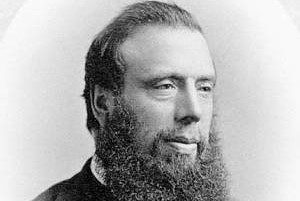 Thomas Roberts Ferguson was born in a rural part of County Cavan, Ireland, in December 1818. He and his family were just some of the hundreds of thousands of Irish immigrants who crossed the Atlantic Ocean to Canada in the 1830s. Thomas’ father, Andrew, died during the journey.
Thomas Roberts Ferguson was born in a rural part of County Cavan, Ireland, in December 1818. He and his family were just some of the hundreds of thousands of Irish immigrants who crossed the Atlantic Ocean to Canada in the 1830s. Thomas’ father, Andrew, died during the journey.
After a brief stay in Montreal, in 1842 the Ferguson family joined the large Irish-Canadian community around Cookstown, and Ferguson became a farmer. Later, after buying up some additional land in the area, Ferguson established each of his brothers on their own farm and moved into Cookstown, where he became a merchant.
Ferguson joined the Orange Order in 1847, at age 29. In 1852, he became master of his local Orange Lodge and later a deputy grand master of the order.
In 1856, Ferguson married Frances Jane Gowan, daughter of Orange leader Ogle Robert Gowan. The couple eventually had three sons and six daughters.
Ferguson was elected to the township council of Innisfil in 1852 and served for 21 years, 18 of them as reeve. Ferguson also served as warden of Simcoe County in 1858 and again from 1862 to 1867.
During the 1858 election, Ferguson ran against fellow Conservative William Benjamin Robinson, defeating him to become representative for Simcoe South. He kept his seat through two subsequent elections, in 1861 and 1863.
At that time, what are now Ontario and Quebec were joined together in one province, and both had equal representation in the legislature, even though Ontario’s population was larger and growing faster than Quebec’s. Throughout his time in the legislature, Ferguson was a strong advocate for instituting representation by population, which would give Ontario more seats than Quebec. The issue, however, remained unsettled until Confederation in 1867.
Ferguson had served as an officer in the Cookstown company of the provincial Sedentary Militia since 1847. In 1862 he was promoted to captain and placed in command of the company.
In 1866, during the Fenian Raids, Ferguson and his men were called out along with tens of thousands of other Canadian militiamen to defend the province against Irish Catholic veterans of the US Civil War who hoped to occupy Canada and trade it with Britain for Irish independence.
Ferguson’s company was stationed at Toronto during the crisis. After a successful raid into Canada in June, many Fenians were arrested by US authorities as they were re-crossing the border. Once the threat to the province had largely passed, Ferguson and his men, like other Canadian militiamen, returned home to a grand reception.
Following the crisis, the Cookstown company was joined together with the other Simcoe County militia companies to form the 35th Battalion (Simcoe Foresters). Ferguson was appointed temporary second-in-command of the unit in 1869.
Upon Confederation in 1867, Ferguson was elected by acclamation to represent Simcoe South in the Legislative Assembly of Ontario, at the same time that he was elected a Conservative member for Cardwell (an early federal riding comprising parts of what are now Peel Region and Simcoe and Dufferin Counties) in the new federal House of Commons.
During his career in the Ontario legislature, Ferguson served on various committees, including the standing committees for railways and for privileges and elections. Ferguson also served on the board of the Northern Railway.
In 1872 Ferguson did not run again for a seat in the House of Commons but was re-elected by acclamation to his seat in the provincial legislature. That same year, however, Ferguson was attending a political meeting in Bradford when a fight broke out between supporters and opponents of the government. In the process of allegedly attempting to stop the fight, Ferguson suffered a severe blow to the head that left him with permanent physical and mental injuries. As a result, he resigned from the Simcoe Foresters, the Northern Railway board, and the provincial legislature in 1873.
After his retirement from politics, Ferguson’s government connections helped ensure his appointment to a civil service position as a customs collector at Collingwood. He was dismissed from that position two years after the Liberal government of Alexander Mackenzie took power in 1874.
Ferguson spent his remaining years at his home in Cookstown, where he died on September 15, 1879, from paralysis. He was 60 years old.
Written by John Merritt, Simcoe County Historical Association
Photo: Thomas Roberts Ferguson.